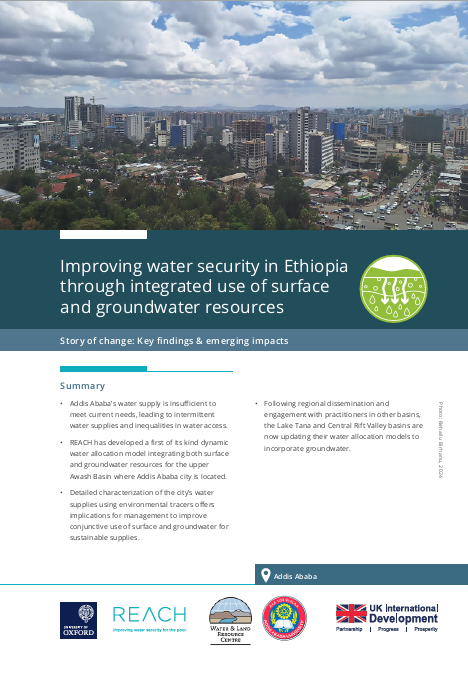As one of Africa’s fastest growing cities, Addis Ababa’s demand for water has sky-rocketed over recent decades due to population growth, increased per capita consumption, rural to urban migration, and growing water demand from industry. Water supplies across the city are already struggling to meet demand, with regularly interruptions to water services exacerbating inequities.
REACH has applied a range of methodologies to examine the implications of climate and population growth for Addis Ababa’s water supply, providing evidence-based recommendations toward improving water security in the city. A crucial element of this work has been the development of a first-of-its-kind dynamic water allocation model integrating both surface and groundwater resources. Supported by this work, two other large basins, the Lake Tana and the Central Rift Valley Lakes basins, totalling 6 million people, have requested technical assistance and are updating their water allocation models to incorporate groundwater.

